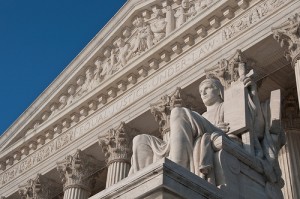In Reed v. Town of Gilbert the Supreme Court held unanimously that Gilbert’s Sign Code, which treats various categories of signs differently based on the information they convey, violates the First Amendment. The State and Local Legal Center (SLLC) filed an amicus brief in this case arguing that Reed’s argument, if adopted by the Court, will render sign codes unconstitutional nationwide.
Gilbert’s Sign Code treats temporary directional signs less favorably (in terms of size, location, duration, etc.) than political signs and ideological signs.
Content-based laws are only constitutional if they pass strict scrutiny—that is, if they are narrowly tailored to serve a compelling government interest.
While the SLLC argued in its amicus brief that the sign categories in this case are based on function, the Court concluded they are based on content. The various categories draw distinctions based on the message a speaker conveys. So under Gilbert’s sign code: “[i]f a sign informs its reader of the time and place a book club will discuss John Locke’s Two Treatises of Government, that sign will be treated differently from a sign expressing the view that one should vote for one of Locke’s followers in an upcoming election, and both signs will be treated differently from a sign expressing an ideological view rooted in Locke’s theory of government.” Continue reading

